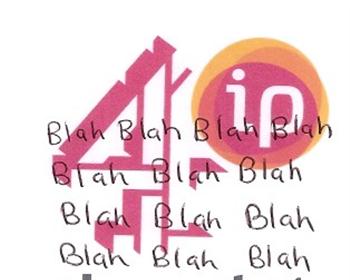There are two types of people in this world, those who know where they are going and those that don’t. Before you think I’m going to start wittering on about people who have a strong sense of life purpose and such like, rest assured. I’m literally talking about their sense of direction. For as long as I remember, I’ve been one of those types of people who have been geographically challenged. A map is and always has been something for me to look at in a state of puzzled bewilderment shortly before it winds up in a crumpled ball in my hands. Things only got worse when I got my driving licence. If someone were to offer me directions then I would nod in a way that signified I knew what they were talking about. However in truth the information that was coming my way was being fed in one ear and essentially spilled out the other. The only way I could learn a route was through repetition and then I would stick to it like glue and God help me if there was anything that would make me deviate from it.
At least that was the case up until recently. A blessing in disguise for the confused contingent amongst us came in the form of satellite navigation. Not a new idea by any stretch of the imagination, after all it’s been around for a few years now and in many new cars that are churning off the production lines it comes as a standard fitting. However the two big plusses about sat nav now is firstly as a product it has reached a mature stage (i.e. it works) and secondly the price is rapidly becoming more and more affordable. Gone are the days when this expensive piece of gadgetry had a slightly hit and miss ratio of getting you to your destination unscathed. Or heaven forbid it would lose contact with those all important eyes in the sky which were responsible for getting you home.
For the last few months I’ve been living with a Tom Tom One personal navigation system. If anything this is the entry level model yet don’t be put off thinking you’re looking at the downmarket sibling of the bunch. If you’re looking to go anywhere this will do just as good a job as the more high end systems on offer.
One of the biggest strengths of the “One” is the design itself, essentially small enough to fit in your bag when you are away from your vehicle; this model is much smaller and lighter than its predecessors. However there has been no sacrifice in screen size or quality as a result of the miniaturisation process. The 3.5” touch display is more than adequate for your needs and is surprisingly resistant to the glare you often get driving in wet and sunny conditions. The real gimmick factor of course is the voice navigation that carefully tells you where to go. You can select a number of different “characters” that will guide you on your route. Thankfully there is plenty of volume available (which was my main criticism of some of the older systems I tried) if like me you find yourself testing the device in an ancient and rather noisy Land Rover.
So how easy is it to actually use.
Well the “One” comes with a robust mounting arm that you slap on your windscreen courtesy of a suction cup. Once in place the cup will remain locked solid until you decide otherwise. This enables you to have the device in a comfortable viewing range at all times (although you don’t need the map that much when the voice is on) . Actually programming a destination is simplicity itself courtesy of the touch screen. Input the address via the onscreen keyboard (or better yet the post code which saves time) and you are literally ready to go. Of course the longer you spend with the device the more you find yourself capable of doing with it. You can plan increasingly complex itineraries and set them to avoid certain routes if necessary. There are also some handy features built into the maps such as the facility to locate things such as hotels and petrol stations and a variety of other landmarks. One of the real strengths of this device is the fact that if you miss a turning or for some reason find you have strayed from the appointed route the device will compensate by figuring out the best way to get you back on track. It’s like having the knowledge as your co-pilot.
This model also has the capacity to connect with some Bluetooth enabled phones across a variety of service providers (do check your phone for compatibility). Once connected your phone sends up to the minute traffic information to the Tom Tom which enables you to avoid any particularly hideous traffic snarl ups that might plague your journey (although if everyone was using this feature wouldn’t we all just get congested somewhere else?). Of course to be able to make use of this service there is a charge (approximately ?40 a year for the UK, yet less for some other countries). Additional navigational voices can be downloaded and you can integrate speed camera warnings into your journey as well which is handy for the more lead footed amongst us. The Tom Tom models also connect to your Mac or PC courtesy of a USB port and a supplied disc of connectivity software that is used for updating the maps on the device (so far I have found that it takes even the latest road modifications into consideration which proves this feature is working).
The real trick I have found using sat nav is to essentially put yourself in its hands. There are times when I’ve tried it on routes that I actually know and it has taken me in directions which made me wonder where the hell I was going, yet in the end it always got me home and usually in a logical fashion. So in summary I reckon if you do find yourself on the road a lot and you are geographically challenged then this is a must have device and coming in at under three hundred quid it finally suits the pocket as well.


